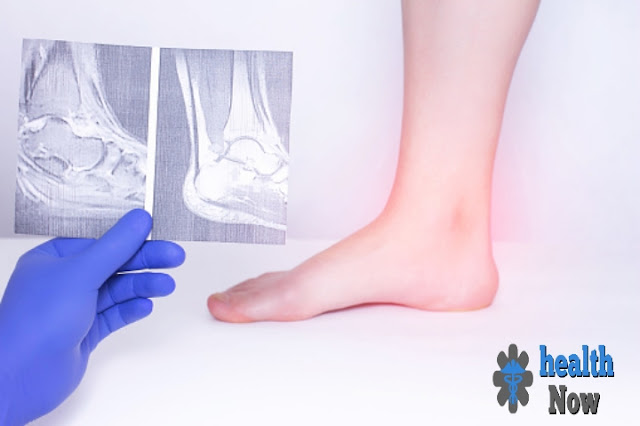psoriatic arthritis treatment.
 |
| psoriatic arthritis treatment |
Psoriatic arthritis is a chronic disease characterized by episodes of exacerbation, and other episodes of reduced severity, and which affects approximately 0.1% of adults, has become a preoccupation of many with psoriatic arthritis treatment.
Arthritis in psoriasis appears in 5% - 7% of patients who suffer from skin psoriasis, which affects about 2% of people. Age 50 - 55.
Skin disease appears in 70% of patients many years before the onset of arthritis, and skin and joint disease begin at the same time in 15% of patients, in the remaining cases, arthritis appears before psoriasis, and arthritis usually appears gradually, but sometimes it is the Very severe onset of inflammation.
Often, dermatitis and arthritis do not get worse at the same time, but in patients whose psoriasis and arthritis started at the same time, exacerbations of the disease occur at the same time.
Psoriatic arthritis can occur in many forms, and psoriatic arthritis affects only one or several joints in two-thirds of patients.
Arthritis appears only in the distal joints of the fingers, in a special group of patients who have injuries to the nails.
Thistlestle up on psoriatic arthritis treatment, its types, and diagnosis.
Types of psoriatic arthritis.
There are several types of psoriatic arthritis, the most important of which are:
1. Symmetrical psoriatic arthritis.
The inflammation appears uniformly on both sides of the body, and it is multi-joint, affecting the joints of the hands, feet, and large joints.
This type occurs in about a third of patients who have arthritis.
2. Destructive psoriatic arthritis.
This type causes severe abnormalities that appear in about 5% of patients.
In this type of arthritis, small joints in the fingers and toes are destroyed, also in one-third of patients who suffer from psoriatic arthritis, and injuries to the spine and hip joints.
In this case, the patient suffers from back pain that increases in intensity during rest times relieve with exertion, and is accompanied by prolonged morning stiffness. The spinal injury can also be independent without injury to the surrounding joints.
Symptoms of psoriatic arthritis.
The main symptoms of psoriatic arthritis are:
- Swelling in the fingers and toes.
- Foot pain.
- Pain in the lower back.
Causes and chance elements for psoriatic joint pain.
The reason for psoriasis and psoriatic joint inflammation is obscure, however hereditary and ecological elements are vital in the advancement of this infection.
risk factors.
There are a few factors that increment the gamble of fostering the infection:
1. Family history of illness.
It is known that in families where there are patients with psoriasis, there are many people with the same disease.
You are 50 times more likely to develop psoriasis if you have a first-degree relative with psoriasis.
2. Psoriasis.
People who have psoriasis of the skin are more likely to develop psoriatic arthritis.
3. Âgé.
Psoriatic arthritis affects people of all ages, but the chance of developing the disease increases between the ages of 30 and 50.
Complications of psoriatic arthritis.
Complications of temporomandibular arthritis:
- Inflammation where tendons and bones meet.
- Inflammation of the eye.
- One of the heart valves is damaged
- Fibrosis in the upper part of the lungs.
- Amyloidosis.
Diagnosis of psoriatic arthritis.
Diagnosis is made by:
1. Physical examination.
The doctor notes clinical signs of swollen joints and others.
2. Imaging examinations.
An X-ray of the joints can help diagnose arthritis, especially in cases of prolonged illness.
It is also possible in the images of the spine to obtain a distinctive picture of the disease, especially in patients with the cervical and dorsal spine and pelvic joints.
3. Blood tests.
A blood test is taken for the accompanying tests:
- Rheumatoid factor test.
- Joint fluid examination.
Psoriatic arthritis treatment.
The treatment is as follows:
1. Initial treatment of psoriatic arthritis.
Toward the start of the illness, non-steroidal calming drugs are given, which are compelling for practically all patients with psoriatic joint pain, particularly spondylitis.
If only one joint is affected, the joint can be pricked and locally injected with steroids.
2. Secondary treatment of psoriatic arthritis.
If the patient does not respond to treatment with these drugs, the possibility of using treatment with second-class drugs should be examined, such as:
- Salazoprine.
- Methotrexate.
- Cyclosporine.
These prescriptions should lessen irritation and forestall joint harm.
Due to the side effects of the medications, comprehensive blood tests (CBCs), and liver and kidney function tests should be done regularly.
3. Biological treatment of psoriatic arthritis.
If the previous drugs do not help, there is a possibility to give new drugs, including Infliximab, which can contribute to the treatment of joint disease and skin psoriasis in more than 80% of patients.
Prevention of psoriatic arthritis.
There are no special ways to prevent psoriatic arthritis.
Read more :
postmenopausal osteoporosis.causes and problem.

